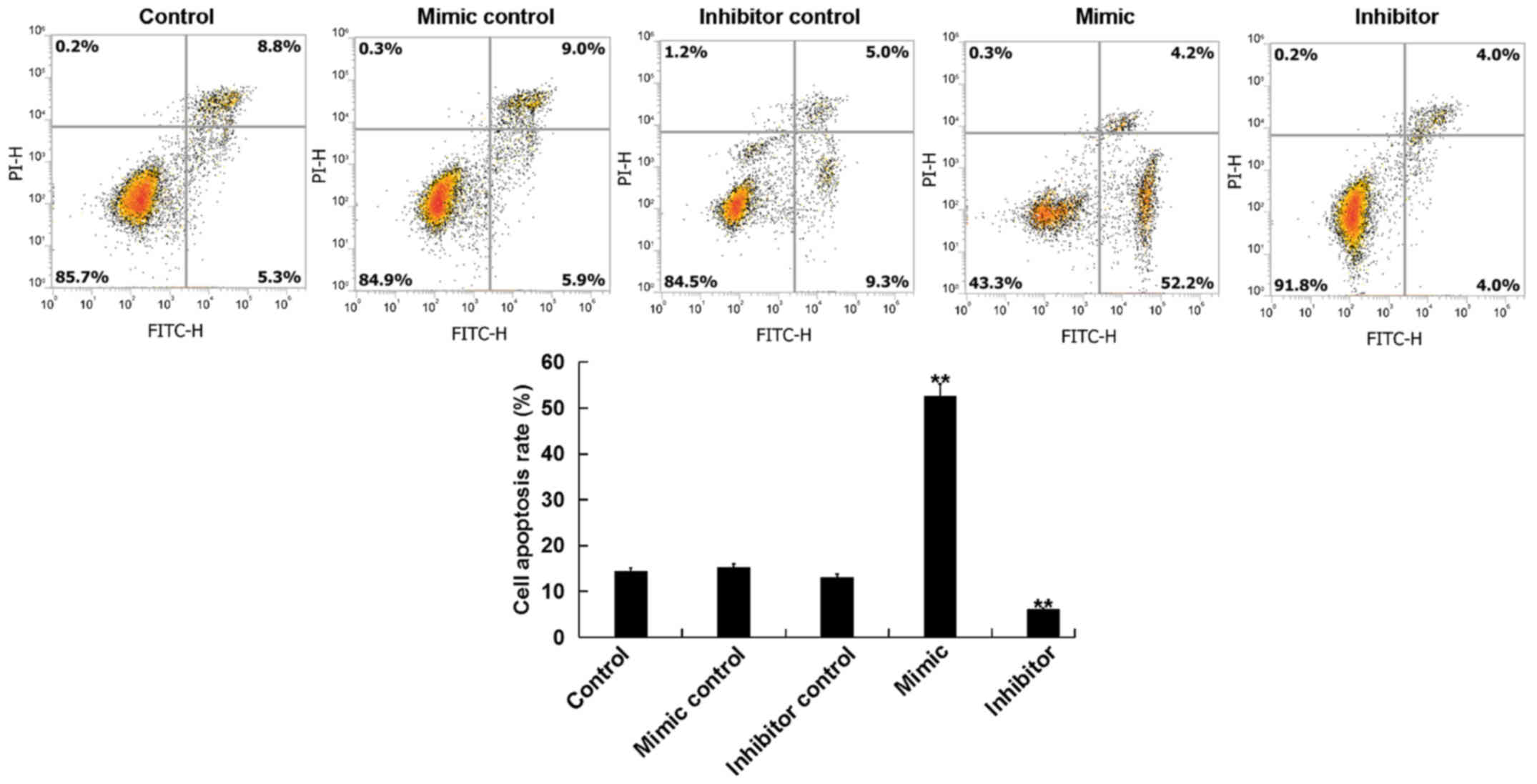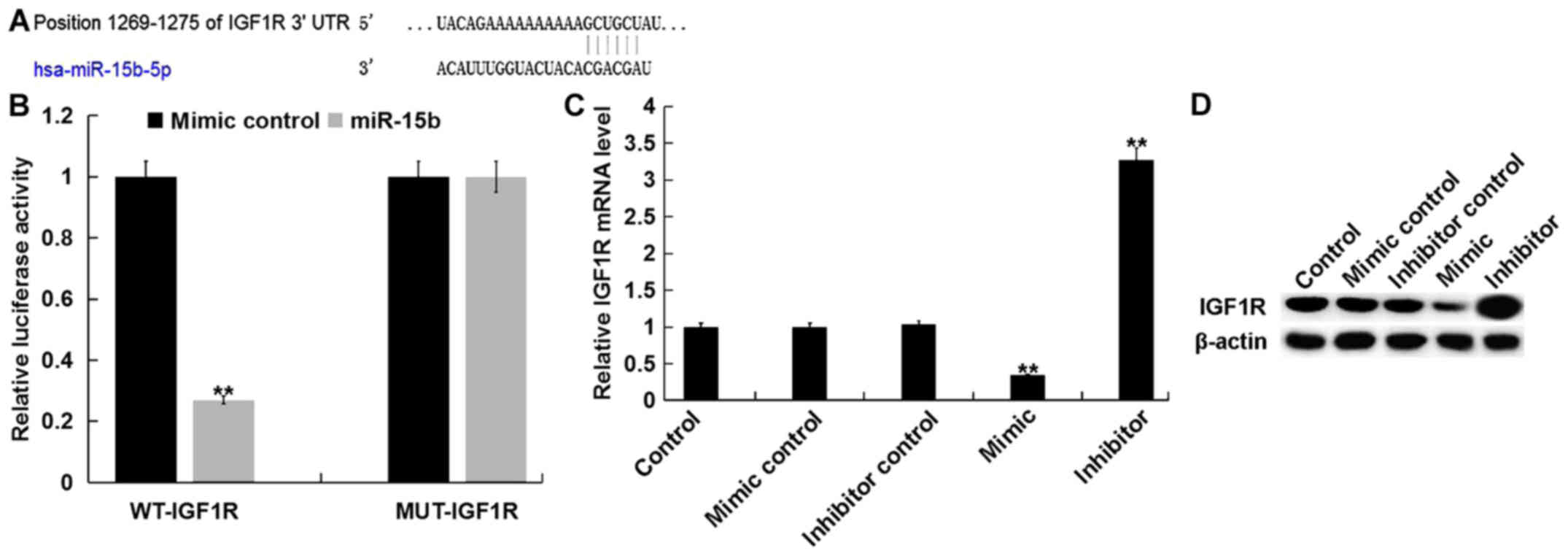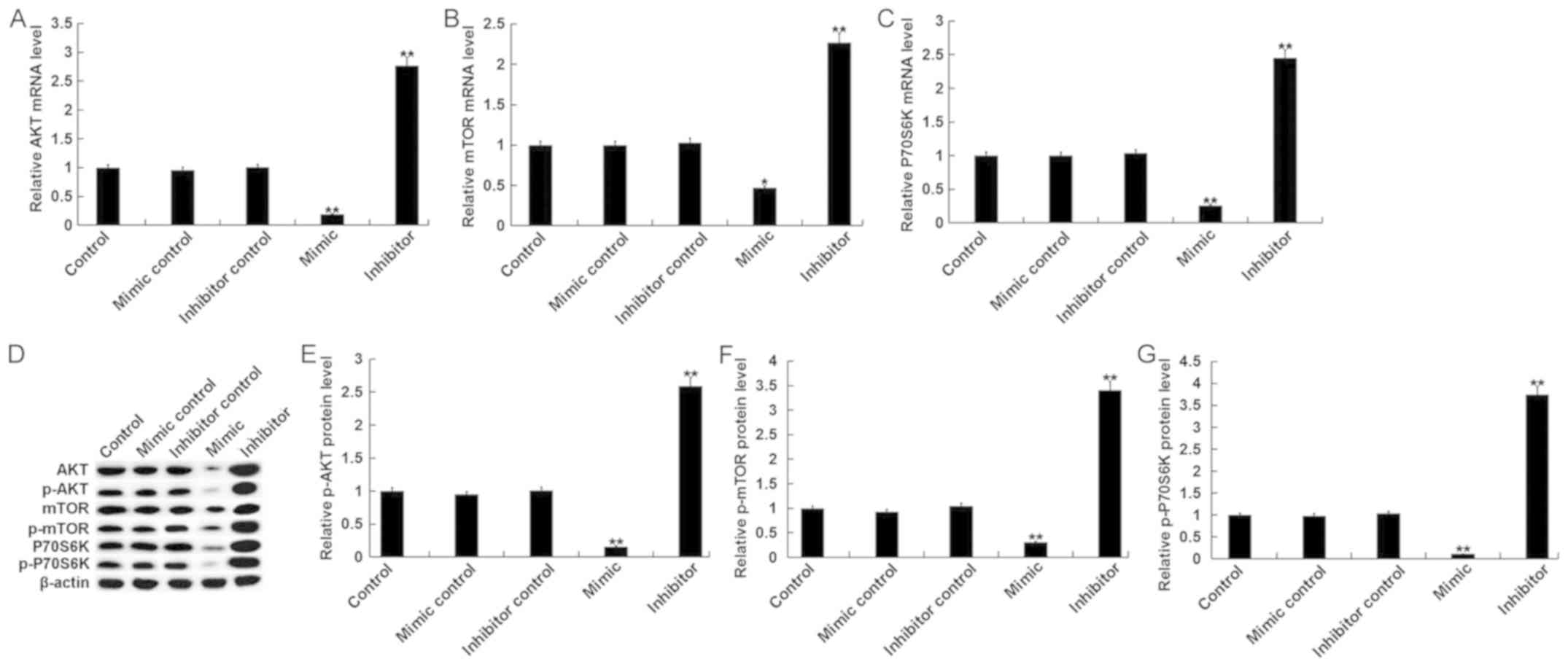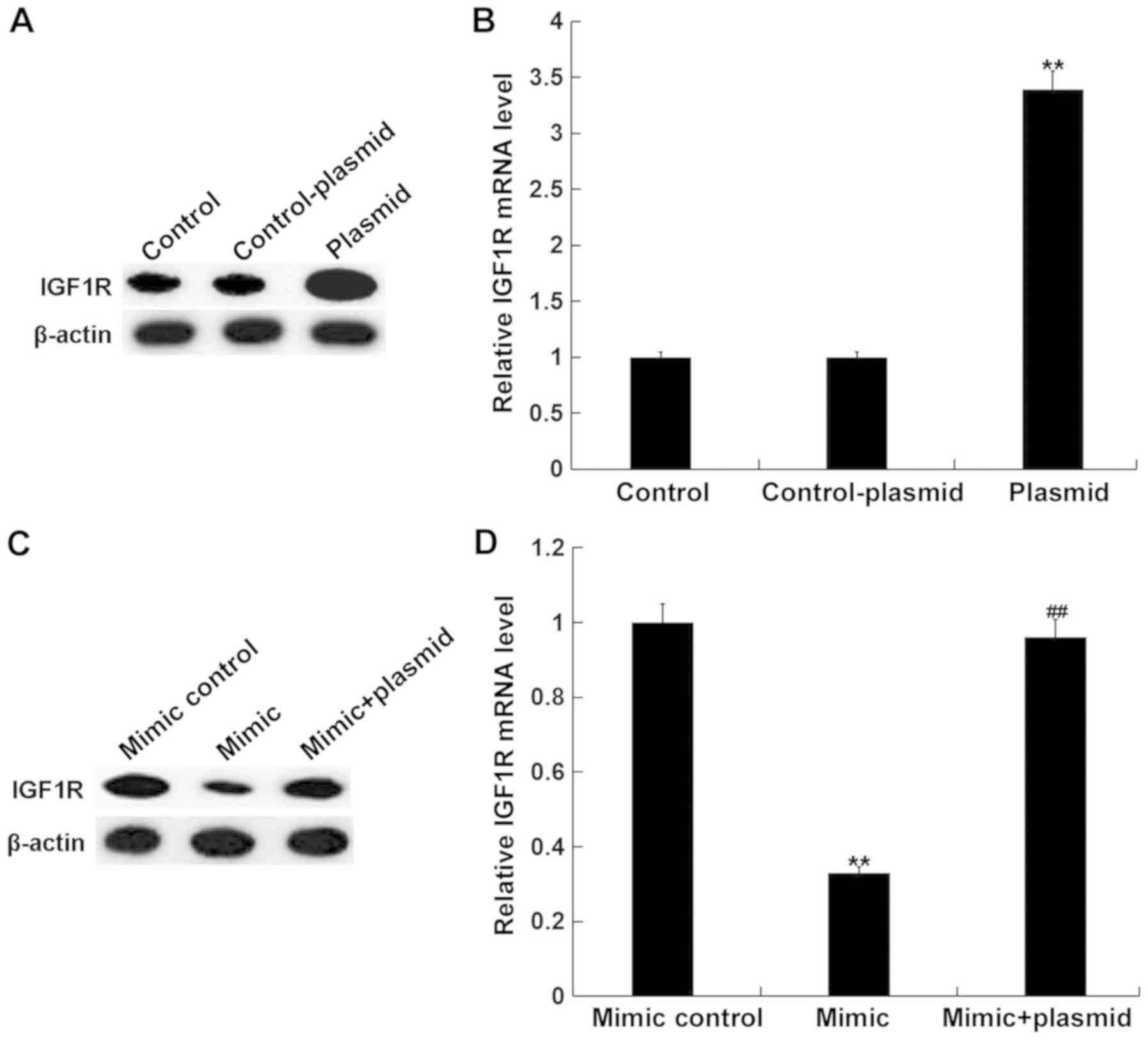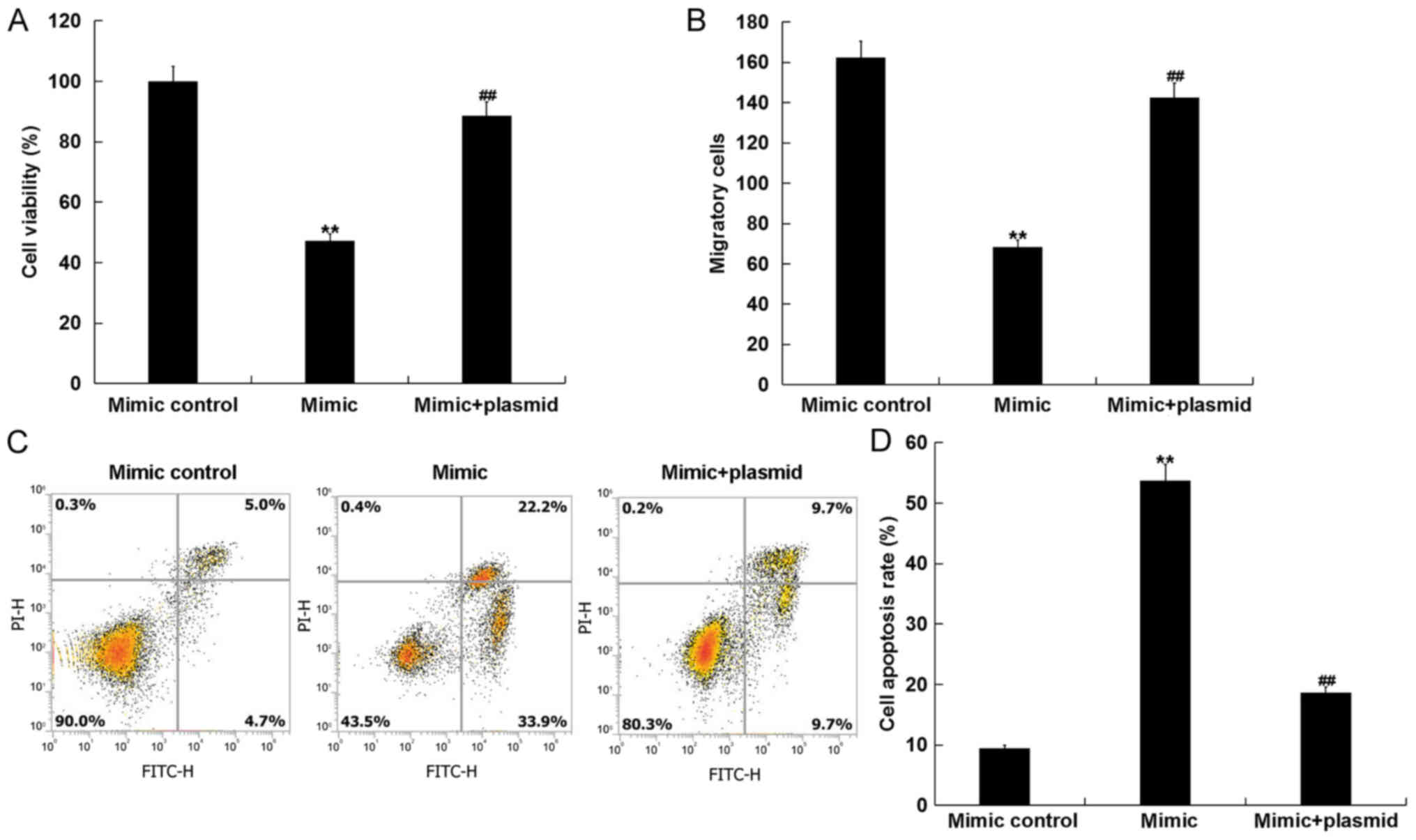|
1
|
Stather PW, Sylvius N, Wild JB, Choke E,
Sayers RD and Bown MJ: Differential microRNA expression profiles in
peripheral arterial disease. Circ Cardiovasc Genet. 6:490–497.
2013. View Article : Google Scholar : PubMed/NCBI
|
|
2
|
Togliatto G, Trombetta A, Dentelli P,
Gallo S, Rosso A, Cotogni P, Granata R, Falcioni R, Delale T, Ghigo
E and Brizzi MF: Unacylated ghrelin induces oxidative stress
resistance in a glucose intolerance and peripheral artery disease
mouse model by restoring endothelial cell miR-126 expression.
Diabetes. 64:1370–1382. 2015. View Article : Google Scholar : PubMed/NCBI
|
|
3
|
Chen L, Liu C, Sun D, Wang T, Zhao L, Chen
W, Yuan M, Wang J and Lu W: MicroRNA-133a impairs perfusion
recovery after hindlimb ischemia in diabetic mice. Biosci Rep.
38:BSR201803462018. View Article : Google Scholar : PubMed/NCBI
|
|
4
|
Hsu PY, Hsi E, Wang TM, Lin RT, Liao YC
and Juo SH: MicroRNA let-7g possesses a therapeutic potential for
peripheral artery disease. J Cell Mol Me. 21:519–529. 2017.
View Article : Google Scholar
|
|
5
|
Dua A and Lee CJ: Epidemiology of
peripheral arterial disease and critical limb ischemia. Tech Vasc
Interv Radiol. 19:91–95. 2016. View Article : Google Scholar : PubMed/NCBI
|
|
6
|
Abu Dabrh AM, Steffen MW, Undavalli C, Asi
N, Wang Z, Elamin MB, Conte MS and Murad MH: The natural history of
untreated severe or critical limb ischemia. J Vasc Surg.
62:1642–1651.e3. 2015. View Article : Google Scholar : PubMed/NCBI
|
|
7
|
Rollins KE, Jackson D and Coughlin PA:
Meta-analysis of contemporary short- and long-term mortality rates
in patients diagnosed with critical leg ischaemia. Br J Surg.
100:1002–1008. 2013. View
Article : Google Scholar : PubMed/NCBI
|
|
8
|
Mejias SG and Ramphul K: Prevalence of
peripheral arterial disease among diabetic patients in Santo
Domingo, Dominican Republic and associated risk factors. Arch Med
Sci Atheroscler Dis. 3:e35–e40. 2018. View Article : Google Scholar : PubMed/NCBI
|
|
9
|
Kloos W, Vogel B and Blessing E: MiRNAs in
peripheral artery disease-something gripping this way comes. Vasa.
43:163–170. 2014. View Article : Google Scholar : PubMed/NCBI
|
|
10
|
Ganta VC, Choi MH, Kutateladze A, Fox TE,
Farber CR and Annex BH: A MicroRNA93-interferon regulatory
factor-9-immunoresponsive gene-1-itaconic acid pathway modulates
M2-like macrophage polarization to revascularize ischemic muscle.
Circulation. 135:2403–2425. 2017. View Article : Google Scholar : PubMed/NCBI
|
|
11
|
Fang J, Song XW, Tian J, Chen HY, Li DF,
Wang JF, Ren AJ, Yuan WJ and Lin L: Overexpression of microRNA-378
attenuates ischemia-induced apoptosis by inhibiting caspase-3
expression in cardiac myocytes. Apoptosis. 17:410–423. 2012.
View Article : Google Scholar : PubMed/NCBI
|
|
12
|
Zhou X, Yuan P and He Y: Role of microRNAs
in peripheral artery disease (review). Mol Med Rep. 6:695–700.
2012. View Article : Google Scholar : PubMed/NCBI
|
|
13
|
Zampetaki A and Mayr M: MicroRNAs in
vascular and metabolic disease. Circ Res. 110:508–522. 2012.
View Article : Google Scholar : PubMed/NCBI
|
|
14
|
Shantikumar S, Caporali A and Emanueli C:
Role of microRNAs in diabetes and its cardiovascular complications.
Cardiovasc Res. 93:583–593. 2012. View Article : Google Scholar : PubMed/NCBI
|
|
15
|
Katare R, Riu F, Mitchell K, Gubernator M,
Campagnolo P, Cui Y, Fortunato O, Avolio E, Cesselli D, Beltrami
AP, et al: Transplantation of human pericyte progenitor cells
improves the repair of infarcted heart through activation of an
angiogenic program involving micro-RNA-132. Circ Res. 109:894–906.
2011. View Article : Google Scholar : PubMed/NCBI
|
|
16
|
Livak KJ and Schmittgen TD: Analysis of
relative gene expression data using real-time quantitative PCR and
the 2(-Delta Delta C(T)) method. Methods. 25:402–408. 2001.
View Article : Google Scholar : PubMed/NCBI
|
|
17
|
Paraskevas KI, Kotsikoris I, Koupidis SA,
Giannoukas AD and Mikhailidis DP: Ankle-brachial index: A marker of
both peripheral arterial disease and systemic atherosclerosis as
well as a predictor of vascular events. Angiology. 61:521–523.
2010. View Article : Google Scholar : PubMed/NCBI
|
|
18
|
Wu MY, Li CJ, Hou MF and Chu PY: New
insights into the role of inflammation in the pathogenesis of
atherosclerosis. Int J Mol Sci. 18:E20342017. View Article : Google Scholar : PubMed/NCBI
|
|
19
|
Di Pietro N, Formoso G and Pandolfi A:
Physiology and pathophysiology of oxLDL uptake by vascular wall
cells in atherosclerosis. Vascul Pharmacol. 84:1–7. 2016.
View Article : Google Scholar : PubMed/NCBI
|
|
20
|
Fu S, Zhao H, Shi J, Abzhanov A, Crawford
K, Ohno-Machado L, Zhou J, Du Y, Kuo WP, Zhang J, et al: Peripheral
arterial occlusive disease: Global gene expression analyses suggest
a major role for immune and inflammatory responses. BMC Genomics.
9:3692008. View Article : Google Scholar : PubMed/NCBI
|
|
21
|
Wingrove JA, Daniels SE, Sehnert AJ,
Tingley W, Elashoff MR, Rosenberg S, Buellesfeld L, Grube E, Newby
LK, Ginsburg GS and Kraus WE: Correlation of peripheral-blood gene
expression with the extent of coronary artery stenosis. Circ
Cardiovasc Genet. 1:31–38. 2008. View Article : Google Scholar : PubMed/NCBI
|
|
22
|
Masud R, Shameer K, Dhar A, Ding K and
Kullo IJ: Gene expression profling of peripheral blood mononuclear
cells in the setting of peripheral arterial disease. J Clin
Bioinforma. 2:62012. View Article : Google Scholar : PubMed/NCBI
|
|
23
|
Wang B, Hong W and Yang Z: MiR-122
inhibits cell proliferation and tumorigenesis of breast cancer by
targeting IGF1R. PLoS One. 7:e470532012. View Article : Google Scholar : PubMed/NCBI
|
|
24
|
Li J and Wang H: miR-15b reduces amyloid-β
accumulation in SH-SY5Y cell line through targeting NF-κB signaling
and BACE1. Biosci Rep. 38:BSR201800512018. View Article : Google Scholar : PubMed/NCBI
|
|
25
|
Sun G, Yan S, Shi L, Wan Z, Jiang N, Li M
and Guo J: Decreased expression of miR-15b in human gliomas is
associated with poor prognosis. Cancer Biother Radiopharm.
30:169–173. 2015. View Article : Google Scholar : PubMed/NCBI
|
|
26
|
Wang H, Zhan Y, Jin J, Zhang C and Li W:
MicroRNA-15b promotes proliferation and invasion of non-small cell
lung carcinoma cells by directly targeting TIMP2. Oncol Rep.
37:3305–3312. 2017. View Article : Google Scholar : PubMed/NCBI
|
|
27
|
Kang L, Yang C, Yin H, Zhao K, Liu W, Hua
W, Wang K, Song Y, Tu J, Li S, et al: MicroRNA-15b silencing
inhibits IL-1β-induced extracellular matrix degradation by
targeting SMAD3 in human nucleus pulposus cells. Biotechnol Lett.
39:623–632. 2017. View Article : Google Scholar : PubMed/NCBI
|
|
28
|
Solarek W, Czarnecka AM, Escudier B,
Bielecka ZF, Lian F and Szczylik C: Insulin and IGFs in renal
cancer risk and progression. Endocr Relat Cancer. 22:R253–R264.
2015. View Article : Google Scholar : PubMed/NCBI
|
|
29
|
Pollak M: The insulin and insulin-like
growth factor receptor family in neoplasia: An update. Nat Rev
Cancer. 12:159–169. 2012. View
Article : Google Scholar : PubMed/NCBI
|
















